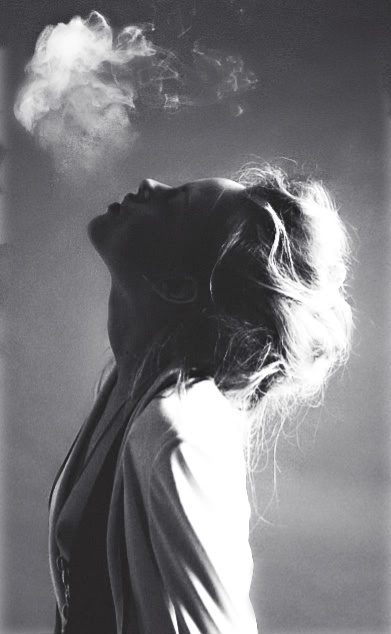*nota editorial: para leer este artículo en Español, desplácese hacia abajo.
Prana is the energy that moves the Universe and, subsequently, us.
Pranayama is the “art” of mastering the prana. In yoga, we learn to use the breath to awaken the energy and facilitate their movement.
Have you ever found yourself distracted by an awkward breathing sound in the middle of yoga class? That was probably the Ujjayi Pranayama. The Ujjayi sound, which has been described as a whistle that has the rhythm of the tides, is the result of gently constricting the throat while breathing.
In the long term, it helps to slow down the breathing as well as regulating the flow of the breath. Ujjayi also aids in avoiding distractions because we may focus our whole attention in the sound.
Also, as the air passes through the chakra located in the throat, it purifies itself. For that reason, we can clean the whole body internally, carrying the purified air to every corner.
To start exercising this method, we first begin by finding a comfortable position:
— Sit over the mat.
— Keep your back straight and firm.
— Put your hands on your knees, palms down.
— Close your eyes. Breathe quietly.
Exhale all the air. Now, inhale through the nose. Fill the lungs completely without swelling the abdomen. Exhale until you empty the lungs completely.
Feel the air passing through both nostrils, then the palate and throat. Listen for the whistling sound. Breath slowly, steadily and deeply. Repeat 5 times.
Let’s try a second sequence, easier this time.
Start again, but this time exhale through the mouth, only to perceive in detail the hiss of the air.
Explore! Play with your fingers over your throat and touch the abdomen with the other hand. Curve your back and get it straight again. Seek a comfortable rhythm, tone and effort.
(During the practice, you should feel no pain or pressure. If so, perhaps you have exceeded the point of exhaustion and got tired. Stop the breathing.)
The third time, you are still sitting on the mat with your spine straight.
This time, deliberately relax your face, ears and eyes; neck, shoulders, arms, thighs and feet. Don’t move your tongue. Direct the abdomen towards the spine. Constrict the throat. Inhale and exhale through the nose. Bring all your attention to the sound.
Feel the exhale grow out, audible and powerful.
Once you finish the reps, rest the body in savasana, lying down with legs and arms fully extended, face up on the mat.
This is only the beginning. The systematic practice of Ujjayi and it’s addition to any asana practice will allow for the gradual cleansing of the body’s energy channels, as well as stimulating circulation of prana.
This purification is an internal experience: our body might start feeling lighter, our thoughts may become less scattered, and the horizon may become more organized and clear. During this time, we notice that the toxic logic that we used to practice on daily basis has been transformed: we breath again, with a steady pace, and because we breathe we move.
It’s like every time we practice Ujjayi, we get the chance to reassert the intent to move according to our own rhythm, in sync with the Universe.
Namaste.
~
Prana es la energía que mueve al Universo y a nosotras en él; el pranayama es el control de ese prana.
En el yoga, aprendemos a usar la respiración para afectar esa energía, despertarla y facilitar su circulación.
¿Alguna vez te distrajo la respiración de tu vecino en una clase de yoga? Eso probablemente era el Pranayama Ujjayi (Ud, expansión; Jaya, victoria).
El sonido Ujjayi, que suele ser descripto como un silbido que tiene la cadencia de las mareas, es el resultado de respirar con la garganta suavemente constreñida. A largo plazo, ayuda a ralentizar la respiración, a regular su fluidez y a enfocar la atención en ella para evitar distraernos.
Mientras el aire pasa por el chakra ubicado en la garganta se purifica, lo que quiere decir que mediante esta práctica, podemos limpiar todo el cuerpo internamente, al llevar el aire purificado a cada rincón.
Vamos a alistar la postura antes de comenzar a ejercitar este método, que organizaremos en tres secuencias:
— Siéntate en una posición cómoda.
— Mantén la espalda erguida y firme.
— Estira los brazos rectos y apoya las manos en las rodillas, con las palmas hacia abajo.
— Cierra los ojos. Respira tranquilamente.
Exhala todo el aire.
Ahora, inhala por la nariz. Llena totalmente los pulmones, sin hinchar el abdomen. Exhala hasta vaciar los pulmones.
Cada vez, siente el aire pasar por ambas fosas nasales, luego por el paladar y la garganta, produciendo un sonido como un silbido. Intenta que la respiración sea lenta, firme y profunda.
Repite 5 veces.
Probemos una segunda secuencia más simple:
Vuelve a empezar, pero esta vez exhala por la boca, sólo para percibir en detalle el silbido del aire.
Explora; toca con los dedos la garganta, con la otra mano el abdomen, curva la espalda y endérazate; busca un ritmo, un tono y un esfuerzo que te resulte cómodo y que no sea excesivo.
(Durante la práctica, no debes sentir ni dolor ni presión interna en algún órgano; si es así, es porque superaste el punto de cansancio y estas fatigada; debes suspender la práctica.)
Repite la práctica una tercera vez.
Relaja deliberadamente la cara, los oídos y los ojos; el cuello, los hombros, brazos, muslos y pies; no muevas la lengua. Dirige el abdomen atrás, hacia la columna vertebral; contrae la garganta. Inahla y exhala por la nariz. Lleva toda tu atención al sonido, siéntelo cada vez más audible y poderoso.
Una vez terminadas las repeticiones, descansa el cuerpo, extendiéndolo completamente boca arriba sobre la mat. Piensa que esto es solamente el principio del aprendizaje.
La práctica sistemática de Ujjayi y su incorporación a la ejecución de las asanas, limpia los canales energéticos y estimula la circulación del prana. Esta purificación no es de un tipo normativo, es la experimentación de que algo se despeja: el cuerpo se siente más liviano, los pensamientos no ocupan tanto lugar, el horizonte se organiza.
Con el tiempo, algunas lógicas se trastocan: empezamos a respirar nuevamente, con un ritmo estable, y porque respiramos nos movemos.
Es como, si cada vez que practicamos Ujjayi, reafirmáramos la intención de movernos a un ritmo establecido por nosotras, en sintonía con el Universo y lo que nos tiene preparado.
Namaste.
Author/El Autor: Li Abel
Editor/El Editor: Emma Ruffin
Photo/Foto: Flickr


 Share on bsky
Share on bsky






Read 1 comment and reply